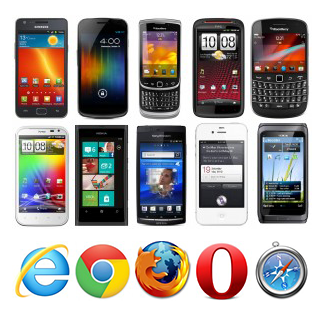Time To Embrace Web Diversity
 So it is kind of intentional that I have been writing about diversity as of late, whether it be intercultural, workplace or literature diversity. As a web developer, I have to always be thinking about building websites that communicate to and are accessible to all people. I recently went to a talk by Rob Larsen, a front-end developer and author of The Uncertain Web. He made some really good points. Essentially he says that it is time to embrace web diversity.
So it is kind of intentional that I have been writing about diversity as of late, whether it be intercultural, workplace or literature diversity. As a web developer, I have to always be thinking about building websites that communicate to and are accessible to all people. I recently went to a talk by Rob Larsen, a front-end developer and author of The Uncertain Web. He made some really good points. Essentially he says that it is time to embrace web diversity.
By web diversity, he means identifying and embracing your online audience, no matter their technological know-how or access. To do this, Larsen suggests focusing on website solutions that are optimized, not absolute. With the rapid growth of mobile technology use, an optimized website should look good on a computer, mobile phone or tablet. More than half of the world’s Internet traffic today comes from mobile devices. Google just announced that its search engines will now give preference to mobile-friendly website.
Developers also have to create websites that look good on all browsers – Chrome, Firefox, Safari, Opera and, yes, even Internet Explorer. While Windows’ problematic browser is reviled among design professionals, Internet Explorer is still the most widely used browser in the world.
Sometimes designers and developers have so many tech bias that we forget that most of the world doesn’t use or have access to the latest, cutting edge technology. MacBooks and iPhones are pretty awesome, but most people use PCs and Androids. I personally use a PC and a Mac simulator to build websites and my mobile is a BlackBerry. Yes, people still use BlackBerrys! I use it because I need a real QWERTY keyboard for typing the dozens of emails and texts daily. I am also a government contractor, and many of the agencies I do work for require that I use a BlackBerry for security purposes.
Most people are not that tech-savvy, so it is always better to design websites for functionality first, like the three-click rule, where users should be able to find anything on a website within three clicks.
Web diversity also means embracing all abilities and disabilities. There are approximately one billion people with disabilities worldwide and websites need to address their needs appropriately.
For example, try using your website without a mouse and a keyboard. If you are not able to use the site by only touching the screen, it is time to redesign the website to better accommodate those with motor disabilities. You also have to take into consideration visual blindness, poor eyesight and color blindness when you use certain colors, text and images.
The Web Content Accessibility Guidelines (WCAG) are a good place to learn more about accessibility issues. Embracing accessibility provides an added benefit for all users, regardless of ability. For example, closed captioning was originally designed for hearing impaired users, but it also benefits those watching online videos in a noisy environment and people learning the language being spoken in the video and need to follow the transcription.
The Web should be as diverse as the people using it.